![]()
![]()
![]()
Use LEFT and RIGHT arrow keys to navigate between flashcards;
Use UP and DOWN arrow keys to flip the card;
H to show hint;
A reads text to speech;
43 Cards in this Set
- Front
- Back
- 3rd side (hint)
|
Stages of Change |
1. Precontemplation 2. Contemplation 3. Preparation 4. Action 5. Maintenance |
|
|
|
Intervention strategies for Stages of Change |
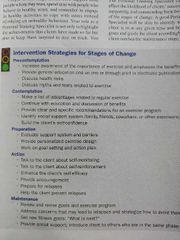
|
|
|
|
What are SMART goals? |
Specific Measurable Attainable Realistic Timely |
|
|
|
Client Personality Traits |
1. Introvert 2. Extrovert 3. Sensor 4. Thinker 5. Intuitive 6. Thinker 7. Feeler 8. Judger 9. Perceiver |
Page 20 |
|
|
Pyramid of Integrated Nutrition |
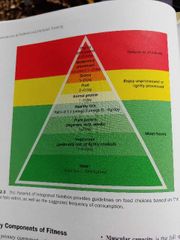
|
Page 32 |
|
|
Primary Components of Fitness |
1. Cardiovascular Capacity 2. Body Composition 3. Muscular Strength 4. Flexibility |
|
|
|
Secondary Components of Fitness |
1. Balance 2. Coordination 3. Agility 4. Speed 5. Reaction Time 6. Power 7. Mental capability |
|
|
|
Cardiorespiratory Recommendations |
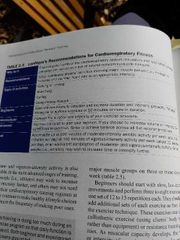
|
|
|
|
Muscle Strengthening Recommendations |
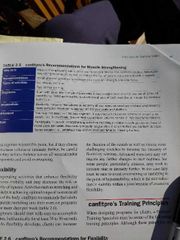
|
|
|
|
Flexibility Recommendations |
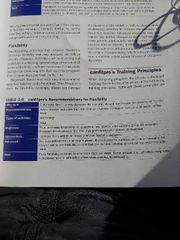
|
|
|
|
What is the FITT principle? |
Frequency Time Intensity Type |
|
|
|
What does Individualization mean? |
Program design must accomodate clients' needs |
|
|
|
What is Specificity? |
If you want to improve a particular aspect of fitness you have to train that aspect specifically |
|
|
|
What is Progressive Overload? |
Continually challenge a client's fitness to see significant improvement over time |
|
|
|
What is EPOC |
Excess post exercise oxygen consumption Essentially recovery oxygen to help the body repay the oxygen debt created during an exercise session |
|
|
|
What is Structural Tolerance? |
As you strength joints you can add great training stressors with a subsequent resistance to injury |
|
|
|
What is metabolism? |
Sum of all chemical reactions that use or create energy Either catabolic or anabolic |
|
|
|
What is homeostasis? |
When demand for energy is met by the supply of available ATP in the body |
|
|
|
Energy Systems |
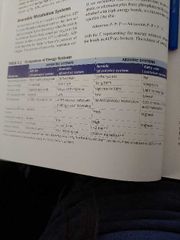
|
Page 50 |
|
|
What is EPOC? |
Excessive post-exercise oxygen consumption Essentially a recovery of oxygen uptake that helps the body repay for oxygen debt created during exercise - both the anaerobic and aerobic metabolic benefit |
|
|
|
Explain how the heart works |
Remember diagram Atriums get blood from Veins Ventricles get blood from arteries |
|
|
|
Explain diastolic and systolic |
Diastolic - relaxation of arteries; lowest pressure measurement Systolic - contraction of arteries; peak pressure measurement |
Page 56 |
|
|
What is stroke volume? |
The amount of blood the left ventricle ejects in one beat. Average 70 milliliters More trained more blood flow |
|
|
|
What is cardiac output? |
The amount of blood the heart ejects in one minute Calculated by stroke volume x heart rate |
|
|
|
What are the physical improvements and benefits of regular cardiorespiratory training? |
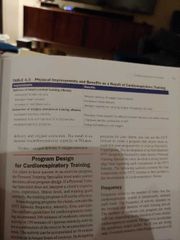
Page 71 |
|
|
|
How do you calculate maxHR? |
220 - age |
|
|
|
How do you calculate HRR? Karvonen Formula |
[maxHR - resting HR x %] - resting HR |
|
|
|
RPE - what is it? |
Rate of perceived exertion |
|
|
|
Cardiorespiratory exercise INTENSITY thresholds for beginner and fit clients |
MODERATE (65-74%) HIGH (75 -90%) BEGINNER (55 to 64%)
|
Page 74 |
|
|
Cardiorespiratory exercise DURATION thresholds for beginner and fit clients |
Fit 30 - 60 minutes
Beginner 10-15 minutes (increase 5 min per week) to eventually 15-30 min
Cardiorespiratory efficiency needs >20 minutes of elevated HR |
|
|
|
Cardiorespiratory exercise TYPE thresholds for beginner and fit clients |
Beginner stick with equipment that requires minimal skill (avoid vertical plane movement) Fit - more complex and along all planes of movement |
|
|
|
Cardiorespiratory FITT guidelines for beginner, intermediate and advanced client |
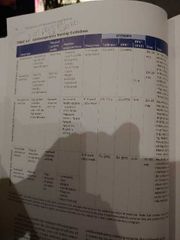
|
Page 75 |
|
|
Oxygen delivery - explain at rest and during exercise |
Page 79 figure 4.7 |
|
|
|
Average resting HR and BP in people |
72 bpm 120/80 mmHg |
|
|
|
How is aerobic capacity measured? |
Amount of O2 that can delivered to the muscle compared with the amount of O2 used by the muscle cell to make energy for muscle contraction (Vo2max) |
|
|
|
What is reciprocal inhibition |
When you activate a prime mover (agonist) the antagonist will be inhibited to allow the movement to occur. When we get overactivation of an antagonist we might get inhibition of a muscle. Ie. Dead butt |
|
|
|
FITT principles for flexibility |
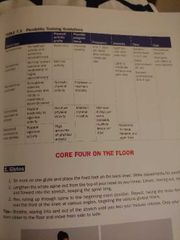
|
Page 149 |
|
|
Explain how flexibility training can help weak muscles get stronger |
We have prime movers and antagonist that work together to allow for a certain movement at a joint in what's called reciprocal inhibition. In some cases a muscle may be inhibited because of of overly active antagonist. Flexibility exercises stretch the overly active antagonist and helps place the focus back on the muscle; forcing it to contract and do its job. |
|
|
|
What is flexibility and why does it matter? |
For the purposes of CanFit it's about range of motion of the muscles that cords a joint. It's matters because it it can help clients stretch the muscles that surround a particular joint thus increasing its range of motion. By aiding in a joints range of motion we can help a client move through foundational movement patterns and thus increase their ability to progress through their training regime in a more holistic manner. |
|
|
|
What is mobility |
The process of moving 1) passive and active 2) stability 4) with resistance |
|
|
|
Types of Bones |
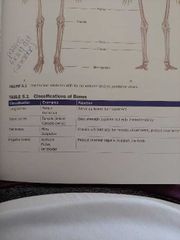
|
Page 85 |
|
|
How many bones does the body have and how are they classified |
206; 270 at birth Appendicular - 126 Axial - 80 |
|
|
|
Types of joints |
1) fibrous - connect bones via fibrous tissue that doesn't allow for much movement (skull) 2) cartilaginous - connect bones via a cartilage; found where the body needs protection and strength (vertebrae, ribs) 3) synovial * - allow for more movement; they have cartilage to reduce friction and absorption and are incapsulated in synovial fluid - hinge (on direction - elbow knee) - condyloid (two planes - wrist and foot) - ball and socket (all three planes) |
|

